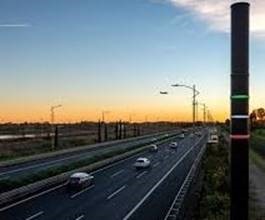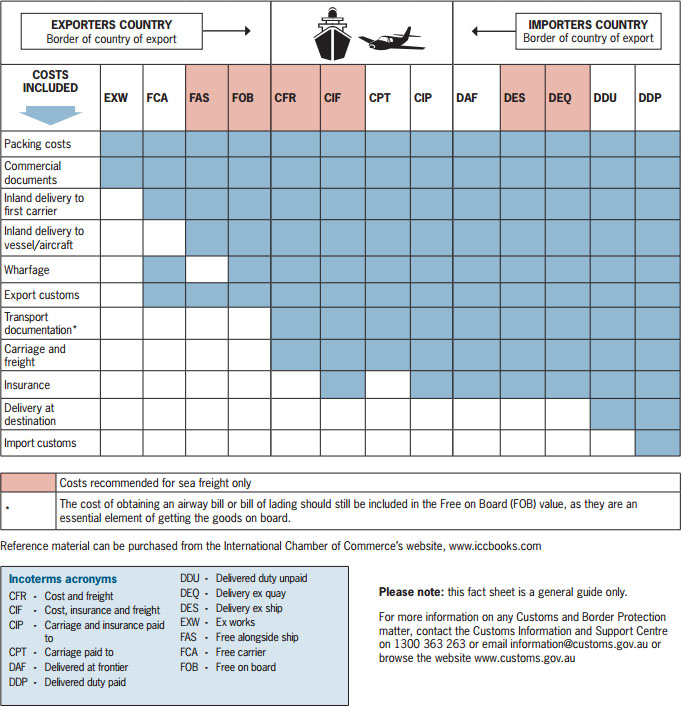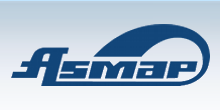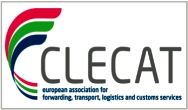121 million euros seized from Amazon

“Workers’ tanks and exploitation”, another investigation by the Milan pm.
the Economic and Financial Police Unit of the GDF in Milan, in an investigation by the pm Paolo Storari and Valentina Mondovì, carried out an urgent preventive seizure of about 121 million euros for tax fraud against the Italian branch of Amazon, the e-commerce giant.
The survey, like others of the sm Storari pm, sees at the center the “labor tanks”, an alleged system through which large companies guarantee “highly competitive tariffs” on the market “by contracting” for their logistics services, the workforce of cooperatives, consortia and “filter” companies in an irregular way, with the attached “exploitation of work”.
The alleged “system” also described in the latter investigation, which led to the 121 million emergency kidnapping this morning, had already surfaced even in cases, just to name a few, investigations into Dhl, Gls, Uber, Lidl, Brt, Geodis, Esselunga, Securitalia, Ups, Gs of the Carrefour and Gxo group, with the latest seizure of almost 84 million on July 2nd. The seizure signed by the pms by Amazon Italia, a group founded by Jeff Bezos with over 500 billion in turnover per year, must also be validated by the gip office.
The investigations revealed events in photocopies of “exploited” workers, forced to pass as in a “transhumance” from one company to another from which they were formally hired – “filter” company” or consortia – and always left without social security and welfare contributions. An alleged “scheme” made with false invoices and VAT evasion and which saw the center in the various investigations, in addition to logistics, also the porterage and private surveillance services, all targeted by the Milanese prosecutor, led by Marcello Viola and with the deputy procurator Tiziana Siciliano. With the investigations, coordinated by pm Storari, the companies, at least fifteen in all, then paid the tax authorities, as compensation on the contested sums, a “total”of about half a billion euros, as was also highlighted in the latest seizure decree: for example, over 35 million from Dhl, 38 million from Gls, almost 48 million from Esselunga, 146 million from Brt, over 86 million from Ups. Furthermore, the companies, as clarified by the Prosecutor’s Office, “provided to internalize the employees, first ‘at the mercy’ of the cooperatives”. Thus, about 14 thousand employees were stabilized over the years and 70 thousand were increased in wages.of cooperatives”. Thus, about 14 thousand employees were stabilized over the years and 70 thousand were increased in wages.of cooperatives”. Thus, about 14 thousand employees were stabilized over the years and 70 thousand were increased in wages.
Pm, unpaid contributions to workers
Rebuilding “the ‘labor supply chain’, it was found that the working relationships with the client company were ‘shielded’ by the ‘filter’ company’ which in turn made use of several cooperative companies (‘tank’ company), which systematically omitted the payment of VAT, as well as social security and welfare charges”. The Milan prosecutor Marcello Viola writes it in a note in relation to the seizure of over 121 million euros from the Italian branch of Amazon, that is Amazon Italia Transport srl, based in Viale Monte Grappa, in Milan. The investigations, “carried out by the Economic and Financial Police Unit of Milan with the collaboration of the Illegal Contrast Sector of the Revenue Agency,they concern the phenomenon of illicit administration of labor”. The investigative hypotheses concern, explains the Prosecutor, “a complex tax fraud deriving from the use, by the final beneficiary”, ie Amazon Italia, “the illegal mechanism of invoices for legally non-existent transactions against the stipulation of fictitious procurement contracts for the administration of labor, in violation of sector legislation, which led to the issue and consequent use of false documents”. Furthermore, the Prosecutor’s Office continues, “several searches in the provinces of Milan and Turin against the natural and legal persons involved, with simultaneous notification of the guarantee information,also with regard to the administrative responsibility of the entities in relation to the criminal offenses committed by the company’s managers, in favor of the latter”. Read all the news
Source: ANSA
OECD ranking: Slovak wages still very far from the world average
July 19, 2024

The global landscape of annual average wages reveals strong contrasts, influenced by factors such as economic development, cost of living and labor laws. The data published by the Organization for Economic Cooperation and Development (OECD) underline these disparities, adjusted according to purchasing power parity (PPP) to take into account the cost of living and differences in inflation. The OECD has provided data for 30 of its 38 member countries, classifying countries based on their average annual wages, offering a snapshot of global income levels.
Italy ranks 19 ° in place of the ranking with an average annual salary of 44,893 dollars. The position reflects the complex economic landscape of our country and with no small surprise we find ourselves overtaken by Slovenia, which has gained 18 ° place. Slovakia, positioned at the bottom of the ranking at 28 ° placed with an average annual salary of 26,263 dollars, is still far from the average wages of the most advanced countries.
The OECD ranking
Country and Average annual salary (in USD dollars, adjusted for purchasing power parity)
1 Luxembourg 78.310
2 UNITED STATES 77.463
3 Switzerland 72,993
4 Belgium 64.848
5 Denmark 64.127
6 Austria 63.802
7 Netherlands 63,225
8 Australia 59.408
9 Canada 59,050
10 Germany 58,940
11 UNITED KINGDOM 53,985
12 Norway 53.756
13 France 52.764
14 Ireland 52.243
15 Finland 51.836
16 Sweden 50,407
17 South Korea 48,922
18 Slovenia 47.204
19 Italy 44.893
20 Israel 44.156
21 Spain 42.859
22 Japan 41.509
23 Poland 36.897
24 Estonia 34,705
25 Czech Republic 33,476
26 Portugal 31.922
27 Hungary 28,475
28 Slovak Republic 26,263
29 Greece 25,979
30 Mexico 16,685
New logistics project in Podunajské Biskupice and Chorvátský Grob
July 17, 2024

The developer Blueprint (Robert Paldia and Peter Dzúrik) is planning two logistics projects in Podunajské Biskupice and Chorvátský Grob for 120 million euros. It is a project that responds to the high demand for logistics premises. Both projects will be financed by 365.invest Capital FKI, managed by 365.invest.
Slovakia’s largest parcel box operator, Czech Packeta, will add 1,000 Boxes within six months. It currently has 1,600. Among the chosen locations there will be the Lidl and Kaufland stores. Alza has over 700 boxes in Slovakia, Slovenská pošta 229 and GLS 534.
The SPS courier has also started building their own parcel boxes. Gradually he wants to have hundreds in Slovakia and has already opened the top ten parcel stations. Nine of them are located in Bratislava.
Smart roads arrive in Italy. What are those black poles on Italian roads?
July 10, 2024

Many are wondering what those black poles are starting to see on the highway. Black poles are a part of the smart infrastructure that is already in operation. The black poles, characterized by green, white and red stripes, have different functions: they are wifi antennas that communicate with each other and with cars, they are drone charging stations, they are equipped with detection sensors of various kinds. They are detection tools and wi-fi antennas capable of detecting information and transmitting data and can communicate both with cars and by sending useful information to traffic control centers. Anas, also thanks to European contributions, has made an investment of around 250 million euros on some road arteries throughout Italy.The infrastructure also involves the use of a series of drones that are guided and recharged by black poles on the highway. The drones will have built-in sensors and offer moving wi-fi connection services. A charging station will then be installed above the poles from which drones can take off and start monitoring the road. Anas’ project is already complete on Salerno-Reggio Calabria, on the Grande Raccordo Anulare in Rome (A90), on the A91 Rome-Fiumicino motorway, on the Orte-Mestre itinerary of the E45 and E55, on the A19 Palermo-Catania motorway and on the RA15 Tangenziale di Catania and other roads of primary importance. A charging station will then be installed above the poles from which drones can take off and start monitoring the road. Anas’ project is already complete on Salerno-Reggio Calabria, on the Grande Raccordo Anulare in Rome (A90), on the A91 Rome-Fiumicino motorway, on the Orte-Mestre itinerary of the E45 and E55, on the A19 Palermo-Catania motorway and on the RA15 Tangenziale di Catania and other roads of primary importance. A charging station will then be installed above the poles from which drones can take off and start monitoring the road. Anas’ project is already complete on Salerno-Reggio Calabria, on the Grande Raccordo Anulare in Rome (A90), on the A91 Rome-Fiumicino motorway, on the Orte-Mestre itinerary of the E45 and E55, on the A19 Palermo-Catania motorway and on the RA15 Tangenziale di Catania and other roads of primary importance.
Source: Camit
Global risks for 2024: the analysis of the Economist
July 8, 2024

As the mid-decade approaches, the global economic and geopolitical landscape is fraught with significant risks that could affect the years to come. According to the Economist Intelligence Unit (EIU), five main threats stand out, each with different probabilities and potential impacts.
1. Worsening monetary policy and global recession
Despite predicting stable growth, there remains a moderate risk that central banks will continue to tighten monetary policy if inflation accelerates again. Such actions could trigger a global recession, resulting in increased financial volatility and global economic conditions. A prolonged rise in interest rates would aggravate financial instability and slow economic recovery efforts.
2. Extreme weather events induced by climate change
The increase in the frequency and intensity of extreme weather events, caused by climate change, represent a high probability threat with a moderate impact. Severe droughts, heat waves and other climatic disturbances could lead to significant production declines, food shortages and global supply chain interruptions. These environmental challenges could also provoke mass migration and conflict, further destabilizing the affected regions and beyond.
3. Geopolitical tensions: China-Taiwan conflict
A potential conflict between China and Taiwan, although currently rated as unlikely, would have an exceptionally high impact. Such a scenario could separate Taiwan’s crucial semiconductor industry from the global supply chain and degenerate into a broader military confrontation that would involve the United States and its allies. The economic and geopolitical repercussions of a war between the two sides of the Strait would be profound, with an interruption of international trade and investment.
4. Escalation of the conflict between Israel and Hamas
Although considered very unlikely, an escalation of the conflict between Israel and Hamas in a regional war would have serious repercussions. A wider involvement by other state and non-state actors could destabilize the Middle East, stop energy supplies globally and undermine regional reconciliation efforts. This would not only aggravate humanitarian crises, but would also entail significant risks for global economic stability.
5. Artificial intelligence and electoral unrest
The growing use of generative artificial intelligence presents a risk of moderate probability of disturbing the main elections. AI-led disinformation campaigns could erode citizens’ trust in political institutions and potentially influence election results in major democracies such as the United States, the United Kingdom, the EU, India and Taiwan. Although the immediate impact may be low, the long-term erosion of political stability and trust could have serious implications for democratic governance.
Source: Camit
ADR transport derogations: the European Commission updates the list

Member States may apply to the EU in order to be authorized to derogate
The European Commission has updated the list of exemptions allowed for the transport of dangerous goods by road, rail or inland waterway in the territories of thirteen member states of the European Union, excluding Italy.
According to EU Executive Decision 2024/1762 / EU, the list of derogations is valid for Austria, Belgium, Denmark, Finland, France, Germany, Greece, Ireland, the Netherlands, Portugal, Spain, Sweden and Hungary, without any specific reference to Italy.
In accordance with Article 6 of Directive 2008/68 / EC, Member States may request authorization from the EU to derogate from the Adr (road) agreements, Rid (railway) and Adn (inland waterway) in specific situations, such as the transport of small quantities of dangerous goods, local transport over short distances or rail transport on designated and monitored routes.
The annexes to Directive 2008/68 / EC contain the updated list of derogations, which is reviewed annually on the basis of new requests submitted to the EU Executive.
Source: ENVIRONMENTAL NETWORK
Transportation
purposeful and purposeful human activity, which consists in the spatial movement of goods and people using means of transport along transport routes in space and time.
Carrier
a person or company that operates transport for its own or another’s use.
Transportation
the resulting product of transport, which satisfies the needs of relocation.
Transporter
collective name for sender and receiver.
Shipping
procurement, provision of transportation of items, or other services related to transportation, under one’s own name to a foreign account on the basis of a forwarding contract.
Sender
transport procurer, a transport relationship is created between the sender and the principal. The main tasks and activities of the forwarder include: 1. Procurement of transport and transshipment The forwarder has the task of choosing the most suitable means of transport according to quality considerations. Detailed knowledge of transport conditions and tariffs are crucial for choosing the optimal carrier and means of transport. Must have knowledge of import, export conditions and customs issues. It procures transportation using a carrier, concludes a freight contract, issues freight documents. In addition, it procures the transshipment of goods. 2. Carrying out transport and transshipment activities: The consignor can transport the goods with his own means of transport as well as carry out transshipment with his own transshipment equipment. 3. Collecting activity: Sorting and distribution of shipments is one of the most important actions of the shipper. It can be ground, water and air shipments. 4. Storage and procurement of warehouses: Goods are stored before, during and after transport. The sender ensures this by concluding a storage contract with the warehouse manager or by storing the goods in his own warehouse. 5. Other activities a) transport consultancy – The forwarder advises on transport issues, refers the customer to the most advantageous mode of transport b) inspection of goods – this includes weighing, measuring, counting, marking, sampling, damage detection, etc. c) processing of goods – filling, mixing, sorting, receiving, etc. d) packing – placing containers, formwork, labeling, tying, palletizing, etc. e) logistic services – consultancy, development, operation of logs. systems, in the procurement of goods and their distribution.
Association of Logistics and Shipping of the Slovak Republic
is a professional association of entrepreneurs doing business in the field of logistics and forwarding, whose task is to support, develop and protect the common professional, economic and social interests of its members. Tasks of the union: – development of domestic and foreign shipping – development of individual branches of transport, especially truck transport – development of international trade – cooperation in warehouse and handling technology with products – cooperation in customs issues – working in legislation with consultancy – representing the interests of its members vis-à-vis the government of the Slovak Republic – consulting activity – informing the public – focus on business, economic activity Membership of ZLZ SR in important associations: – CLECAT – European Organization for Forwarding and Logistics – FIATA – International Association of National Associations of Forwarders – ICC – International Chamber of Commerce Slovakia ZLZ SR issues FIATA documents: – bill of lading FBL – forwarding confirmation FCR Publishing activity of ZLZ SR: – General forwarding conditions – Proceedings of lectures from international conferences “The role of the forwarder in international trade” Educational activity: – in cooperation with the Faculty of Operation and Economics of Transport and Communications of the University of Žilina in Žilina organizes the course ” Forwarder – Shipping expert FIATA” – in cooperation with the Faculty of Operations and Economics of Transport and Connections of the University of Žilina in Žilina regularly organizes an international conference “The role of the forwarder in international trade” – cooperates with the University of Žilina in Žilina and secondary vocational schools in ensuring the teaching of forwarding.
The Agreement on the International Carriage of Dangerous Goods by Road (ADR) was concluded on September 30, 1957 in Geneva under the auspices of the Economic Commission for Europe at the United Nations and entered into force on January 29, 1968. On August 21, 1975, this agreement was amended in New York by the Protocol on amending Article 14, paragraph 3, the amendment entered into force on April 19, 1985.
Currently, the following states are contracting parties to ADR:
Albania, Andorra, Azerbaijan, Belgium, Belarus, Bosnia and Herzegovina, Bulgaria, Cyprus, Czech Republic, Montenegro, Denmark, Estonia, Finland, France, Greece, Georgia, Netherlands, Croatia, Iceland, Ireland, Kazakhstan, Liechtenstein, Lithuania, Latvia, Luxembourg, Malta, Morocco, Hungary, Republic of Moldova, Germany, Nigeria, Norway, Poland, Portugal, Austria, Romania, Russian Federation, San Marino, North Macedonia, Slovakia, Slovenia, United Kingdom, Serbia, Spain, Switzerland, Sweden , Tajikistan, Italy, Tunisia, Turkey, Ukraine and Uzbekistan.
ADR applies to transport operations, execaired in the territory of at least two of the above-mentioned contracting parties.
Obligations of the carrier when transporting dangerous goods:
- to ensure that the transport of dangerous goods does not endanger the life and health of persons, animals, plants or other components of the environment,
- ensure that the vehicles comply with the design requirements and, if required, ensure that the vehicle is equipped with a vehicle approval certificate,
- ensure that there are written instructions according to ADR in the vehicle,
- ensure that the vehicle, or vehicles transporting dangerous goods, are accompanied by other professionally qualified persons in addition to the crew, if so determined by an international agreement,
- to equip the vehicle with special equipment according to written instructions,<
- ensure the retraining of persons involved in the transport of dangerous goods,
- appoint a safety advisor for the transport of dangerous goods.
Duties of the crew when transporting dangerous goods:
- to be informed about the nature of transported dangerous goods,
- check the correctness and completeness of the prescribed accompanying documents, which the sender is obliged to process and deliver, before starting the transport of dangerous goods,
- mark the vehicle transporting dangerous goods with orange signs and safety stickers and ensure their removal after the end of such transport,
- familiarize yourself with the content of the written instructions before loading begins,
- in the event of an accident or emergency, carry out the measures specified in the written instructions,
- do not accept for transport a piece whose packaging is damaged,
- submit accompanying documents, fire extinguishers and special equipment to the authorities for inspection,
- if the loading is carried out by the crew, observe the provisions regarding loading, unloading, handling of dangerous goods, the method of transport and supervision of the vehicle,
- the driver may not transport persons not belonging to the vehicle crew,
- properly familiarize yourself with the operation of fire extinguishers,
- prohibition to open parcels,
- prohibition to use a lighting fixture with an open flame and a metal surface,
- prohibition of smoking during loading, unloading and handling of dangerous goods,
- during the handling of dangerous things, the engine must be turned off, if it is not required for the operation of some equipment, and the parking brake must be used when the transport unit is stationary.
Responsibilities of a safety advisor when transporting dangerous goods:
- monitor compliance with the regulations governing the transport of dangerous goods,
- carry out consultancy for your organization in the transport of dangerous goods,
- regularly retrain employees with regard to changes in legislation or changes to the ADR agreement,
- prepare an annual report,
- to look for the easiest way to transport dangerous goods.
Required documents during transportation
- Transport document – contains data similar to the bill of lading, i.e. substance identification number, proper shipping name, safety marks, packaging group, limiting tunnel code, sender and recipient, etc. The data must be written in the official language of the sender and also in English, German or French. Warning: When transporting dangerous goods in Slovakia, you must use the “Wage waybill for the transport of dangerous goods” model according to decree no. 357/2007 – annex no. 10.
- Written instructions intended for the event of an accident or emergency must be in the driver’s cabin and must be in a language that the driver and other crew members of the vehicle can read and understand. Warning: The written instructions must be on four pages, in color, the same for all drivers. They must receive them from the carrier before the trip.
- Other documents:
- Photo ID – for each crew member
- Certificate of approval of a vehicle for the transport of certain dangerous goods – issued by STK for vehicles of type FL, AT, EX/II, EX/III and MEMU – see ADR – part 9
- ADR certificate on driver training for the transport of dangerous goods – in the SR issued by the Ministry of Internal Affairs of the SR after completing the training and taking the test – in the language of the issuing country and also in French, English or German
- According to the requirements of ADR, a possible transport permit
Transport unit equipment:
Equipment for personal and general protection for the implementation of general measures and specific rescue measures related to danger, transported on a vehicle according to section 8.1.5 ADR
- The following equipment must be on the transport unit:
- for each vehicle, a wedge whose dimensions correspond to the maximum permissible weight of the vehicle and the diameter of the wheels;
- two freestanding warning signs;
- eyewash(s);
- and for each member of the vehicle crew
- life jacket (for example: as described in EN471);
- portable lighting equipment;<
- a pair of protective gloves;
- eye protection (eg goggles).
- Additional equipment required for certain classes:
- rescue escape mask (b) for each member of the vehicle crew, which must be transported in the vehicle in the case of safety signs of models no. 2.3 or 6.1;
- shovel(c);
- channel overlay(c);
- collection container(c).
(a) Not required for safety tag numbers 1, 1.4, 1.5, 1.6, 2.1, 2.2 and 2.3
(b) For example, a rescue escape mask with combi a new gas/dust filter type A1B1E1K1-P1 or A2B2E2K2-P2, which is similar to the filter described in the EN 141 standard
When it is a sub-limit transport according to ADR
- Maximum fuel volumes (PHM) according to ADR
- fuel located in the fuel tank of the vehicle and intended for its propulsion (up to 1500 l, maximum 500 l on the trailer)
- no more than 60 liters can be transported in portable fuel tanks per transport unit
- fuel contained in the tanks of vehicles or other means of transport (such as ships) carried as cargo
- Sublimit ADR transport
Transportation of a certain maximum amount of dangerous goods. We are based on the transport categories listed in Column 15 of Table A, Annex 1 of the ADR Agreement for each UN number. - The calculation of danger points must be part of the transport document.
For sub-limit ADR transport, it is necessary:
- have a 2 kg fire extinguisher in the vehicle
- have documents: CMR (as with full ADR + state transport category), one-day training certificate
- have unit shipments marked as in full ADR (UN number, safety marks, UN packaging code)
For sub-limit ADR transport, it is not necessary:
- mark the vehicle
- written instructions in case of an accident
- have full ADR equipment
- have a certificate of ADR training (orange card)
The revised volumes of the ADR 2023 agreement (ADR volume I and volume II) can be found on the website of the Ministry of Transport of the Slovak Republic.
https://www.mindop.sk/ministerstvo-1/doprava-3/preprava-nebezpecneho-tovaru-30/po-ceste-462
Incoterms (originally from the English International Commercial Terms) is a set of international rules for the interpretation of the most frequently used commercial terms (delivery clauses) in foreign trade. They are also rarely used in domestic business transactions.
The colloquial word “Incoterms” refers to “clauses according to Incoterms”.
Incoterms basically determine the place and method of transfer of risk (for loss of goods, etc.) and conditions (customs clearance, acceptance of goods, etc.) arising from the delivery clauses specified in the sales (not transport) contract, i.e. the risks and conditions in the relationship between sellers and buyers, in international trade. The Incoterms clause always takes the form of a few-letter abbreviation (eg DAF). In the ideal case, the contract should include, for example, ….DAF Bratislava….The contract is governed by Incoterms 2000… and in practice the abbreviation DAF is then interpreted according to the text of Incoterms 2000.
Rules for any type(s) of transport
- EXW – EX WORKS / FROM THE FACTORY (…agreed place)
- FCA – FREE CARRIER / PAID TO THE CARRIER (… agreed place)
- CPT – CARRIAGE PAID TO (…agreed destination)
- CIP – CARRIAGE AND INSURANCE PAID TO (… agreed destination)
- DAP – DELIVERED AT PLACE / WITH DELIVERY TO THE PLACE (…agreed destination) – replaces the former
- DDU clause
- DAT – DELIVERED AT TERMINAL (…agreed terminal)
- DDP – DELIVERED DUTY PAID / WITH DELIVERY DUTY PAID (… agreed destination)
Rules for transport by sea and inland waterways
- FAS – FREE ALONGSIDE SHIP / PAID ALONGSIDE SHIP (…agreed port of embarkation)
- FOB – FREE ON BOARD / PAID ON SHIP (…agreed port of embarkation)
- CFR – COST AND FREIGHT
- CIF – COST, INSURANCE AND FREIGHT

Liability of the road carrier in international transport
From the international CMR convention, the responsibility of the carrier (exclusively by road) for the transported goods follows. Liability is fixed at 8.33 SDR per kilogram of cargo, regardless of the real value of the goods. The SDR is a currency unit of the International Monetary Fund determined by recalculating the exchange rates of the four strongest world currencies, the exchange rate of which is floating, 8.33 SDR units is approximately EUR 9.53.
In the event of loss or damage, the carrier must reimburse the owner for each kilogram of cargo up to a given amount. The carrier is therefore not liable for the full value of the cargo. Such damages are covered by compulsory insurance.
Damages covered by insurance:
- Liability for partial or complete loss of the shipment
- Liability for partial or complete damage to the shipment
- Liability for exceeding the delivery period, which results from the CMR convention
Liability of the road transporter in domestic transport
For domestic transport, liability is defined in the Commercial Code, in § 624. The carrier is responsible for the transported foreign goods in full. This means that if:
- loss or destruction of the cargo, the carrier must compensate the owner for damages in the amount of the value of the goods, which he had at the time of receipt.
- damage or deterioration of the shipment, the carrier must pay the difference between the value of the cargo at the time of its acceptance and the current value.
During domestic transport, although Mr insurance is not mandatory, but due to the high risk it is almost necessary. Domestic transport insurance covers the same damages as international transport insurance:
- Liability for partial or complete loss of the shipment
- Liability for partial or complete damage to the shipment
- Liability for exceeding the delivery period, which results from the CMR convention
Liability of the road carrier in cabotage
For cabotage, liability insurance is taken out with special conditions. In many countries of the European Union, such insurance is mandatory, while it is insured for higher insurance amounts.
Liability of the carrier for damage or loss of goods
In international road freight transport, the responsibility of the carrier for damage or loss of goods transported on the basis of the CMR waybill is determined by the Convention on the contract of carriage in international road freight transport. The responsibility of the carrier results from its basic obligation to carry out the agreed transport from the place of dispatch to the place of destination with professional care and in the agreed or reasonable period of time and issue the shipment to the authorized recipient in an intact condition.
The responsibility of the carrier itself is defined by the CMR Convention in such a way that the carrier is responsible for the total or partial loss of the shipment or for its damage, which occurs from the moment of acceptance of the shipment for transport until the moment of its release. The responsibility of the carrier is also established for exceeding the delivery period.
Beginning of the carrier’s responsibility
In order to determine the road carrier’s liability, it is important to determine the beginning of the flow of liability. When it comes to damage to the shipment, its loss or exceeding the delivery time, it is not possible to clearly assign blame to the carrier. In practice, however, it is based on the assumption that if damage occurs to the shipment while the shipment was in the care of the carrier, the responsibility is assigned to the carrier, without examining its fault. The carrier can get rid of this responsibility only by applying the developing reasons, which are strictly stipulated in the CMR Convention. These are reasons that the carrier could not foresee in advance and could not prevent the damage, e.g. sudden natural disaster. For determining the beginning of the carrier’s responsibility, neither the moment of the beginning of the transport nor the date of the conclusion of the transport contract are decisive. However, it is important that the shipment is taken over for the purpose of transportation, because if the carrier takes over the shipment for another purpose, e.g. for the purpose of its storage, is not responsible for the shipment during this time as a carrier but as a warehouseman (in the Slovak Republic according to the Commercial Code).
Termination of the carrier’s iability
The carrier’s liability does not end with the simple delivery of the shipment to its destination. The carrier’s liability flows end with the delivery of the shipment, that is, only at the time when the authorized recipient or his authorized representative is allowed to obtain actual possession of the shipment. It should be noted here that the carrier’s responsibility does not end if the shipment was delivered to an unauthorized person. Only with the proper delivery of the shipment is the transportation completed and the transportation contract fulfilled, and only at this moment does the carrier have the right to pay the transportation fee.
Liability of the carrier for damage
As already mentioned, the carrier is responsible for the complete or partial loss of the shipment or for its damage, which occurs from the moment of acceptance of the shipment for transport until the moment of its release, as well as for exceeding the delivery period.
The carrier does not take responsibility if the loss of the shipment, its damage or exceeding the delivery period was caused by:
- authorized order of the carrier,
- for a reason other than the negligence of the carrier,
- due to the shipment’s own error,
- circumstances that the carrier cannot avert and eliminate their consequences is not in his power.
The carrier is also not responsible if the transported goods are damaged during transport as a result of inappropriate loading of the shipment by the sender.
On the other hand, the carrier cannot get rid of its responsibility in the event of defects on the vehicle that was used for transportation, nor the fault or negligence of the person from whom he hired the vehicle, or their representatives or workers.
The carrier is also responsible for the consequences of the loss or incorrect use of the documents listed in the bill of lading and attached to this bill or handed over to the carrier. However, in case of loss or incorrect use of documents, the carrier is obliged to compensate the maximum amount that he would have to pay if the shipment was lost.
According to the CMR Convention, the carrier is released from liability if loss or damage occurs due to special peril related to one or more of the following facts:
- use of open vehicles without sails, if such use was expressly agreed and noted in the bill of lading,
- missing packaging or defective packaging of a shipment that requires proper packaging or, if it is not packed at all, is subject to loss or damage,
- handling, loading, storage or unloading of the shipment by the sender or recipient,
- the natural nature of a certain of goods for which it is subject to total or partial loss or damage, mainly due to breakage, corrosion, internal deterioration, drying out, etc.,
- insufficient or incorrect marks or numbers of individual pieces of the shipment, transport of live animals.
So, in cases where the loss, damage or delay was caused by the improper procedure or negligence of the principal, the carrier is exempted from liability in legal disputes.
Developing reasons
According to the CMR Convention, the carrier is relieved of its responsibility for damage also in the event that the damage to the shipment was caused by force majeure, that is, for reasons that the carrier could not foresee or avert their influence. In practice, however, the courts are very strict in relation to the carriers when determining the developing reasons, which is shown by the following practical experiences based on the judgments of the courts.
Driving bans in Europe valid for vehicles over 7.5t.
The quality policy of our company consists of the following main points:
- the effort to provide comprehensive forwarding and logistics services and to achieve a stable position on the logistics market
- constant reduction or prevention of damage events
- satisfaction of business partners and employees
- increasing corporate culture and image of the company
- emphasis on the environment
Shipping conditions
All the transports carried out by us are governed by the principles of the General Forwarding Conditions of the Association of Logistics and Forwarding of the Slovak Republic, as amended, approved by the assembly of members of ZLZ SR on 05/12/2005.
Transportation schedule
The freight road transport regulations contain the carrier’s conditions for concluding a cargo transportation contract and its content. The applicable legislation directly refers to the transport order.
Transport schedule of TIREX spol. Ltd.
We offer you space to express your opinion on the services provided, either in the form of a comment or a proposal for improvement. You can also use this space to ask questions about any area of your interest.











